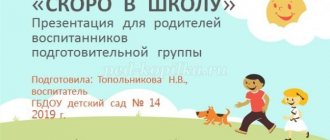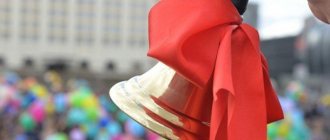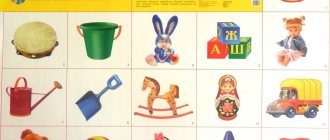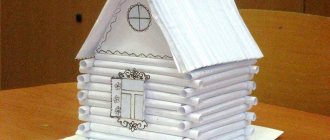Seminar for parents of future first-graders:
Seminar No. 1
“School of Cooperation” for parents of future first-graders.
(The seminar is held in the second half of May)
Target:
Building interaction between family and school.
Tasks:
- Meeting parents of first-graders.
- Strengthening connections with parents, involving them in joint activities.
- Information: school requirements, educational program, additional services, organization of the afternoon at school.
- Solving organizational problems: new subject environment and schoolchildren’s health.
- Minimizing adaptation problems at the start: parents and children - transition to a new status.
Plan for a seminar for parents of future first-graders
| № | Event | Time spending | Location | Responsible |
| 1 | Meeting of the seminar participants. | 17.00 | Assembly Hall | Director |
| 2 | School tour 3 groups of parents | 17.10-17.25 | School no. | Director Deputy dir. UVR Deputy dir. according to OER |
| 3 | “What and with what do we go to school.” | 17.25-17.45 | Office no. | Deputy dir. according to OER Chairman of ShMO Teacher |
| 4 | “School is a new stage in a child’s life.” | 17.45.-18.00 | Assembly Hall | Psychologist IT-teacher |
| 5 | Educational program for 1st grade students. Additional education at school. | 18.05.-18.25 | Office No. | Deputy dir. UVR Director |
| 6 | Summarizing | 18.25.-18.35. | Assembly Hall | Director |
Section
School is a new stage in a child’s life.
Target:
increasing parents' attention to their child's readiness for school.
Tasks
: 1. Introducing parents to the educational activities of children, the status of the student, and the student-teacher relationship.
2. Disclosure of the components of psychological readiness.
3. Solving psychological situations with school problems that have arisen.
Speech plan:
- Solving current issues with a group of parents (dialogue form)
- Information on preparing a child for school
- Practical situations and ways to solve them
Hello dear parents. Not much time will pass and the first of September will come. How to make the changes that happen in your life positive? Let's try to speculate on this topic.
— What should a future first-grader have?
(knowledge, skills)
How can a parent determine their child’s readiness for school?
— What is the duration of classes with a child at home?
— What is the role of the daily routine for first-graders?
— What new appears in the life of a child when he, armed with a bouquet of flowers, a new briefcase, dressed up, goes to school for the first time? What changes in his life from this moment?
1. Educational activities.
In preschool age, the leading activity is play. But once you enter school, the leading activity becomes study. Elements of the game are retained throughout grades 1-2.
2. Student-teacher relationship.
They require the first grader to take on the role of a student - the ability to listen and carry out the teacher’s tasks.
3. Student status.
New social role of the child. A symbol of further development.
4. Psychological readiness for learning at school.
Determination of psychological readiness.
What components does psychological readiness for school consist of?
1. Intellectual readiness –
this is the age-appropriate maturity of all cognitive mental processes (sensation, perception, memory, thinking, representation).
By the age of 6–7 years, a child should know:
- His address and the name of the city in which he lives;
- Name of the country and its capital;
- Names and patronymics of your parents, places of their work;
- Seasons, their sequence and main features;
- Names of months, days of the week;
- Main types of trees and flowers;
- Be able to distinguish between domestic and wild animals;
- Understand that a grandmother is the mother of a father or mother;
- Be able to navigate time, space and immediate surroundings.
2. Personal readiness
– this is the maturity of the preschooler’s relationship system. Among the most important relationships, the following stand out:
- Attitude towards oneself;
- Attitude towards adults;
- Attitude to learning at school.
3. Emotional readiness
– this is the ability, at an age-appropriate level, to adequately perceive the emotions of others and express one’s own emotions.
4. Subjective readiness
– this is the maturity of a preschooler as a future subject of educational activity. Among the prerequisites for the educational skills that schoolchildren master are:
highlight:
- Prerequisites for mastering writing (phonemic hearing, fine motor skills;
- Prerequisites for mastering counting (idea of quantity);
- Prerequisites for mastering reading;
- Mastering language as a system for receiving and transmitting information.
5. Motivational readiness
– this implies that the child has a desire to accept a new social role – the role of a schoolchild.
You should give your child only positive information about school. Remember that your assessments and judgments are easily borrowed by children. The child should see that his parents are calm and confident about his upcoming entry into school.
Parents do not have to develop a love for school, since it is impossible to love something that you have not yet encountered. It is enough to let the child understand that studying is the responsibility of every modern person.
6. Willful readiness
– this is the ability to accept a task, act on its implementation, and analyze the result obtained.
The development of strong-willed readiness for school is facilitated by: visual activity and design.
7.
Physical readiness
- a state of health, having the strength to sit for 45 minutes in class and spend the entire first half of the day at school. His physical maturity should help guide the child in his mental processes and assimilate all educational material.
Memo for parents
Do you want your child to enjoy going to school?
- Don't talk badly about school, don't criticize teachers in front of your children.
- Do not rush to blame the teacher for the lack of an individual approach; think about your own behavior.
- Remember how many times you sat with your child and watched him work on his homework. Have there been any cases when you noticed incorrect work techniques in a child and showed him the correct ones?
- If there is a conflict situation at school, try to resolve it without discussing all the details with your child.
- Make sure your child goes to bed on time. A child who doesn't get enough sleep in class is a sad sight.
- Let your child see that you are interested in his assignments and the books he brings from school.
- Read for yourself, let your child see that you spend your free time reading books, and not just watching TV or at the table.
- Teach your child to express thoughts in writing: exchange notes with him, write letters together. If a child tells you about an event that made an impression on him, then invite him to write down this story and read it to all family members in the evening.
Take part in the life of the class and school. Your child will be pleased if his school becomes a part of your life.
Section
“What and with what do we go to school?”
"School uniform".
Hello dear parents of first graders. We're glad to see you.
Before talking about the topic of our section, I would like to ask about this:
-What do you think can set a child up to perceive school and the educational process more seriously and in a business-like manner?
You are right, clothes greatly influence human behavior.
-How does a person feel dressed in business style?
-What benefits can a school uniform provide?
-Do you think our first-graders need a school uniform?
Our section is called “What and with what we go to school”
To determine what a first-grader should look like, what kind of b.b. we will discuss its appearance with you in the mini debate “Fashion Designer”.
You are now seated at three tables. There is an envelope with a task on each table.
- The first table is our economists. They will work with marketing materials for St. Petersburg. on the pricing policy of school uniforms. Including ready-made forms, sewing them in the studio according to individual orders, consider prices for materials.
- The second table is our designers. They will determine the style of the school uniform, the number of items in the suit, and the color scheme.
- The third table is our consumers. They will develop and present a list of requirements for school uniforms for economists and designers.
You are given 8 minutes to work in groups. After the time has passed, a representative from each association must speak and talk about the group’s achievements with argumentation.
Express questionnaire for parents “Requirements for school uniforms.”
1. In terms of comfort, a school uniform should be:
2. School uniforms must be within the pricing policy:
3. According to the design, the school uniform should be (Color scheme, number of items in the suit, style, etc.):
4. A single form is needed:
- Only in your class
- All along the parallel
- Throughout the school
Mini-dispute based on the results of the groups’ work.
Well, we have decided on the style of clothing for our children, but the briefcase will also play a very important role in the child’s school life.
— What do you think a first-grader should have a briefcase like?
Discussion
Demonstration of briefcases sewn according to all the requirements of the age anatomy of junior schoolchildren.
Reminders for parents
Requirements for an elementary school student's portfolio:
- Lightweight, with a rigid back
- The straps are wide, lockable, padded
- With convenient zippers, locks, and pockets for accessories.
Bags with one strap or over the shoulder are unacceptable (they create incorrect posture), and briefcases with aggressive symbols are unacceptable.
School requirements for replacement shoes:
- Shoes should have a hard heel and a small heel.
- It is advisable that shoes be made from natural materials.
- The sole should be non-slippery and not leave marks on the floor.
- It is not advisable to purchase shoes with open heels, high heels, or sneakers.
- Shoes should be combined with business attire.
The list of required subjects for lessons: fine arts, physical education, music, labor training - varies annually (lists are given to parents)
Parents also receive a list of school supplies for basic subjects.
Section
Educational program "Harmony" for 1st grade students.
The process of implementing new goals and objectives of primary education turned out to be difficult due to the content of old textbooks equipped with outdated methodological apparatus. It is not always possible for a teacher with established teaching experience to realize developmental potential that is not methodologically identified by the author of the textbook.
We tried to work using different teaching methods. Considering that the “Harmony” and “School 2100” sets are open, we had the opportunity to select textbooks that corresponded to our inclinations and the needs of our students. At our school we have experience working with the “Prospective Primary School” program, experience working with the Buneevs’ textbooks, and the traditional program.
The “Harmony” program was mastered gradually. The biggest problem of elementary school is that children come to us with different levels of readiness for school, different abilities, and with different types of nervous systems. Observing children and identifying their differences, the teacher must clearly realize that in addition to positive characteristics, both of them may experience difficulties, but these difficulties are different. Therefore, an individual and differentiated approach is needed. Such pedagogical activity requires increasing the professionalism and skill of the teacher himself in terms of self-improvement of his personality.
Educational set "Harmony"
(Scientific supervisor – N.B. Istomina)
The leading idea of the set, according to the authors, is the educational activity of younger schoolchildren, its methods (setting and solving an educational problem, self-control, self-esteem, productive communication), providing comfortable conditions for the development of the child in the process of mastering knowledge, skills and abilities that meet the requirements of the State educational standard .
Methodological approaches implemented in textbooks create conditions for the child to understand the issues being studied, for harmonious relationships between the teacher and the student and children with each other, and ensure a situation of success through measures to purposefully overcome learning difficulties.
Also, the specificity of the content of educational subjects is reflected in the teaching methodology.
The kit provides: targeted formation of mental activity techniques; priority of independent activity of students when mastering content; conditions for a harmonious relationship in the “Teacher-student”, “Student-students” systems;
Today we will dwell in more detail on such subjects as:
Literacy training
The proposed set of new aids for teaching literacy to first-graders includes:
— “The ABC” (2 parts) N.B. Betenkova
- “My first notebooks” - Copybooks No. 1,2,3,4 - for teaching children to write and develop speech.
Letter
I can’t say enough about the writing lessons. We were very pleased with the copybooks “My first notebooks”. From the very beginning they were lined in one line ,
which makes it possible to teach children a single way of writing right away, without re-teaching, and accelerates the development of automatic writing.
To make it easier to determine the height of lowercase and capital letters, dotted lines are drawn in notebooks, but already on some pages of the first and subsequent copybooks, 1-2 lines are left without auxiliary dotted lines.
Working on them contributes to the development of students' eye and gradually accustoms them to writing in regular school notebooks. Slanted writing is ensured by the correct position of the notebook while writing with a slant to the left.
When teaching writing, unlined sheets
of paper are actively used.
First, on an unlined sheet of paper, children reproduce the outline of the new letter in an enlarged form, reinforcing the correct hand movement when writing. Then, after the teacher analyzes the shortcomings of the work done, the children move on to writing in copybook, using differentiated copying based on pale font samples. Literacy and writing instruction ends by the end of February - beginning of March.
Russian language
Russian language. Textbook-notebook, reference manual. Author Soloveichik
The most important feature of the course presented in this program is its communicative orientation, which involves systematic training of schoolchildren in all types of speech activities: speaking, listening, writing, reading.
The second feature of the course is related to the setting of the learning process: based on the language experience and natural linguistic intuition of children, an activity-based approach to language learning and further practical mastery of it is implemented.
The third fundamental feature of the course is the introduction of significant changes to the content and organization of the adopted spelling teaching: improving the motivational basis of teaching, strengthening the role of the communicative motive, as well as the inclusion of a systematic (starting from the 1st grade) formation of spelling vigilance and spelling self-control of younger schoolchildren.
Mathematics
Textbook. Workbooks – 2 parts. Flashcards. Author Istomina.
While developing the program, the authors did not change the fundamental positions of the concept, the essence of which is associated with certain answers to three main questions of methodological science:
“Why teach?”
“What to teach?”
“How to teach?”
Peculiarities:
The formation of mental activity techniques begins with 1st lesson “Signs of objects ”, a different order of writing numbers
:
1,7,4 we learn to write numbers that are similar in spelling.
The skills of writing numbers are developed in parallel with the study of the topics “Point. Straight. Curve. Ray. Length. Segment " Number ray is used as a visual aid for comparing numbers, addition and subtraction
Introduction to the program of the topic “Whole and Parts”
helps children understand the relationship between addition and subtraction, between the components and results of these actions.
The world
Textbook-notebook – 2 parts. Notebook for independent work. Author Poglazova.
When working on different programs, the school team does not set the goal of identifying which program is better. Teachers have long come to the unequivocal conclusion that the best program for a child is the one that most closely matches the level of development of his cognitive interests. Our goal is, within the framework of the chosen “Harmony” program, to create conditions for the maximum realization of his personality.
— What questions do you have about the “Harmony” kit?
Additional education at school
| № | Name of additional services - free | Schedule | teacher |
| 1 | Computer club "School Tutor" | ||
| 2 | Computer club "First steps in the world of computer science" | ||
| 3 | theatre studio | ||
| 4 | Circle “Patterns of herbs” IZO | ||
| 5 | Circle "Grandma's Chest" handmade | ||
| 6 | Rhythmics | ||
| 7 | Club "Ball Games" | ||
| 8 | Club "Tales of St. Petersburg" | ||
| Name of paid additional services | |||
| 1 | Preparing preschool children to study at the School of Early Development. | ||
| 2 | Club "Spoken English" | ||
| 3 | Section “Gymnastics for girls” | ||
| 4 | Club "Ballroom Dancing" | ||
| 5 | Computers “Text documents and multimedia presentations” |
— What questions do you have regarding additional education?
Summarizing
Our first seminar with you has ended. Was it useful to you? Which section was most relevant? Is this form of work acceptable to you? If you still have questions, what are they? Thank you for your work, we are waiting for you at the “First of September” holiday.




